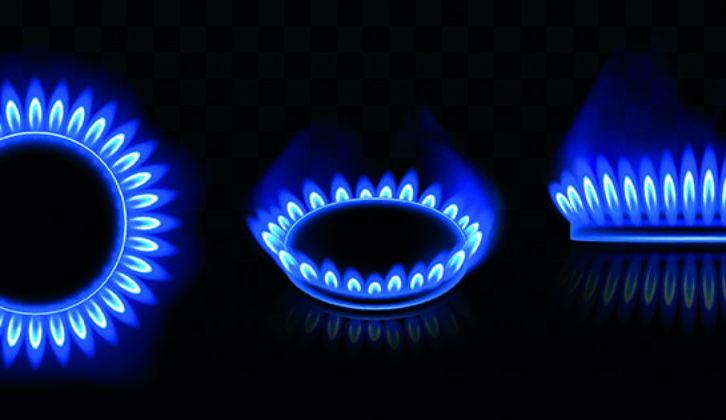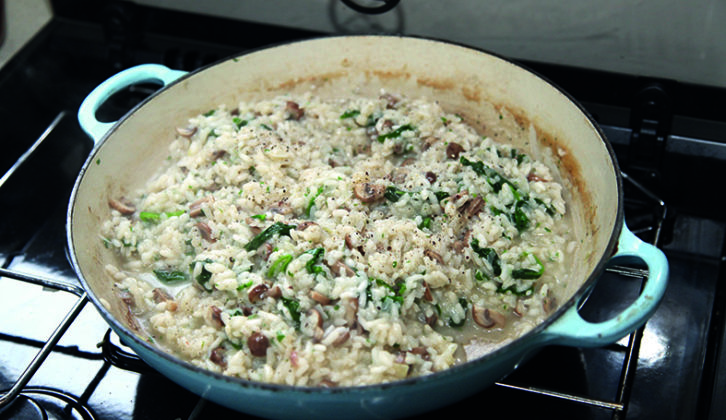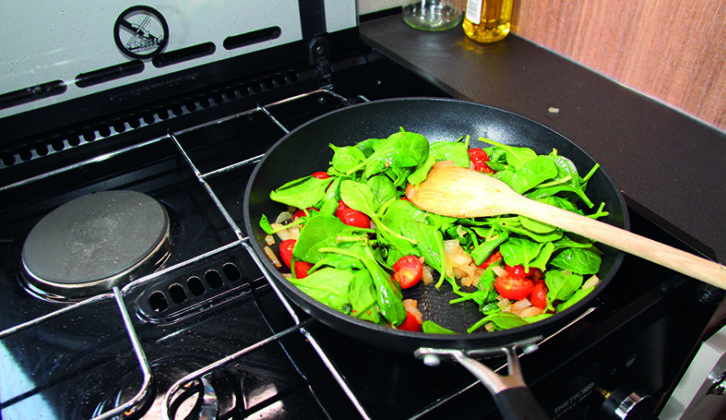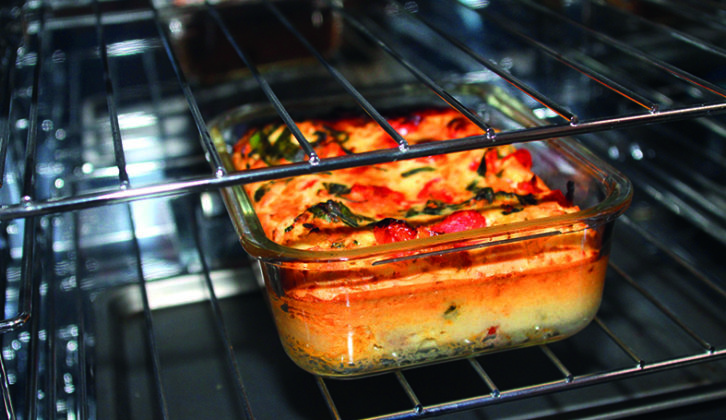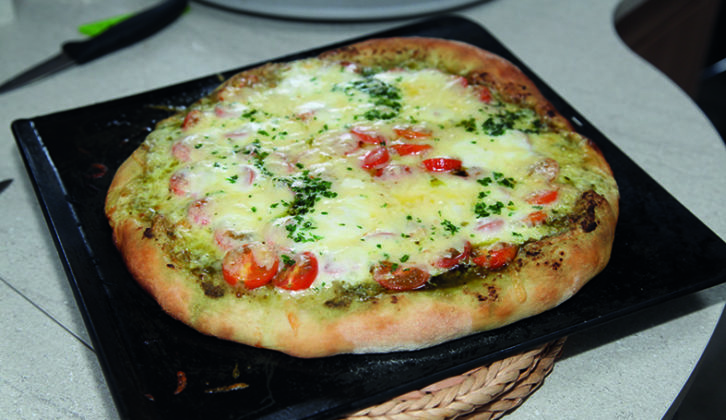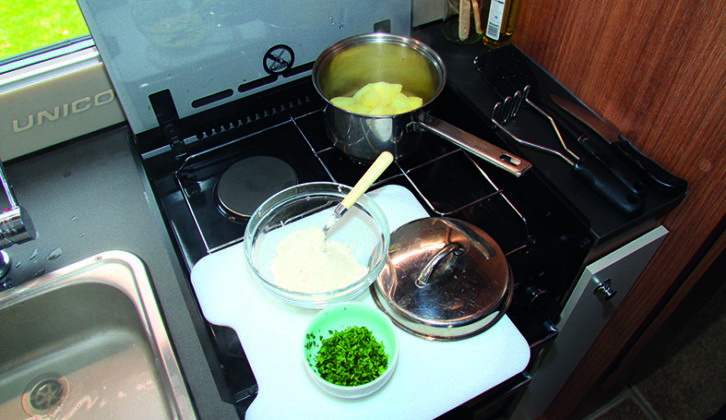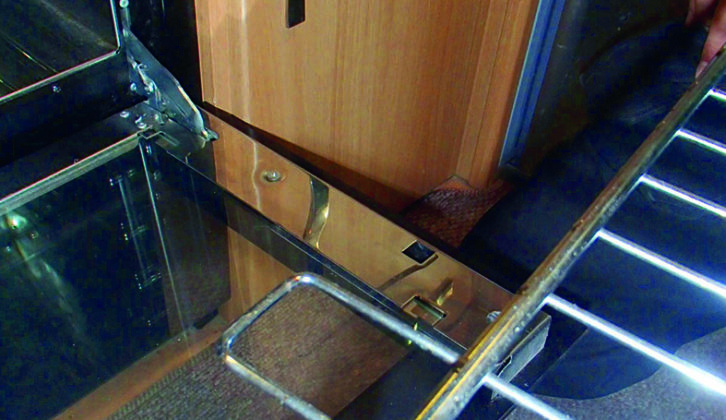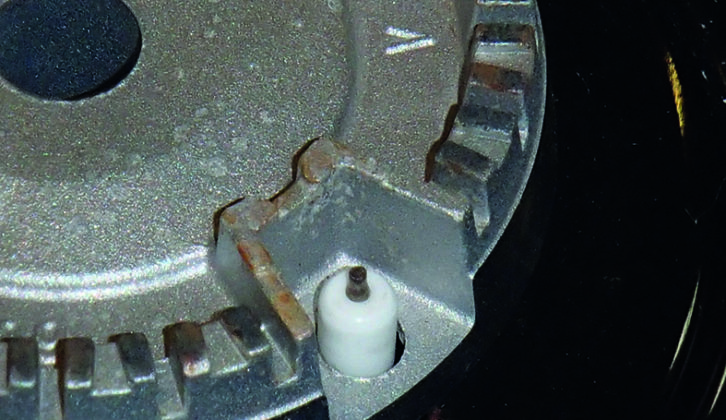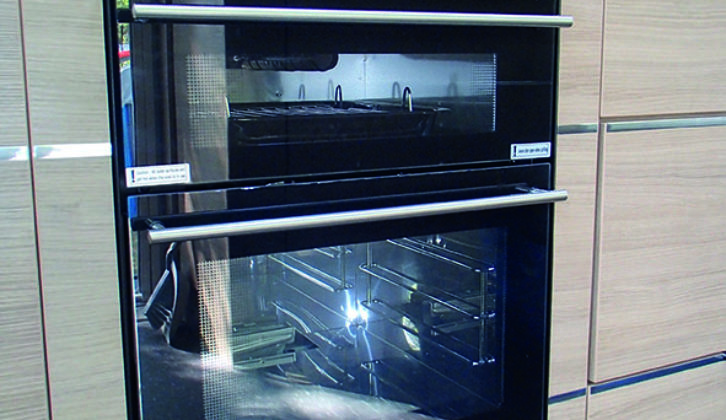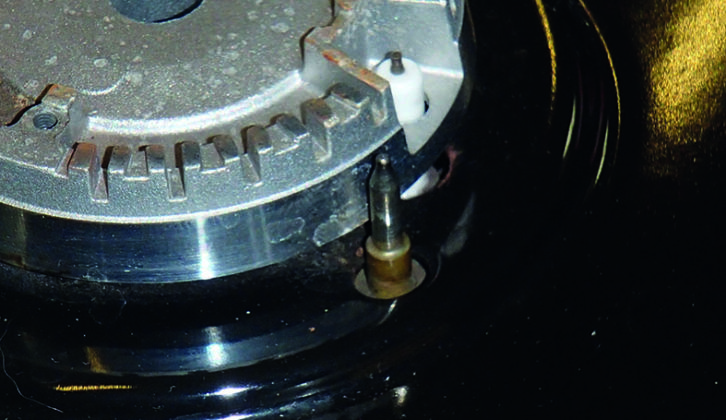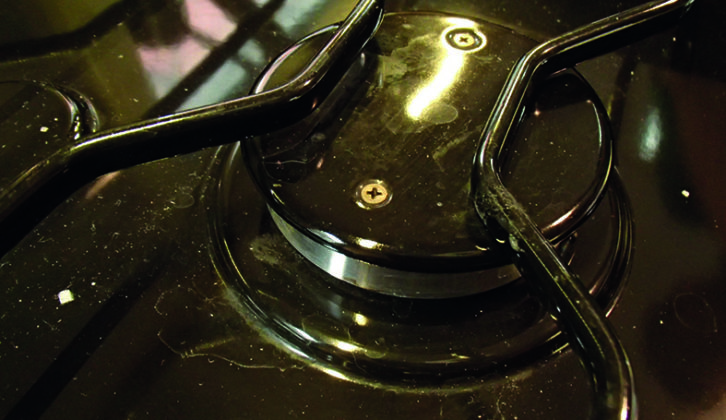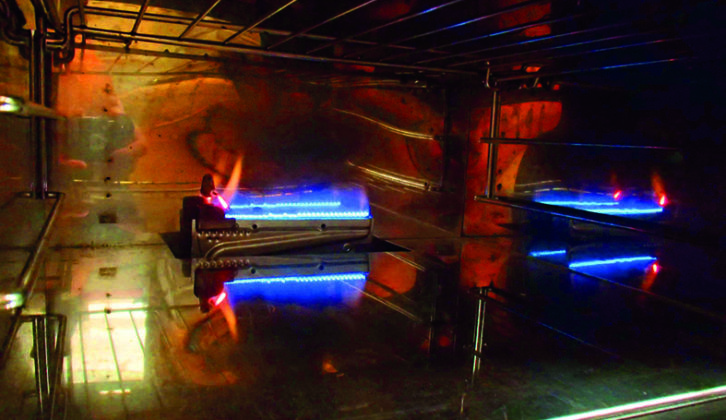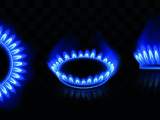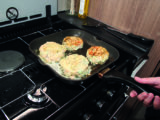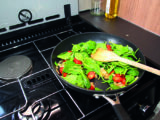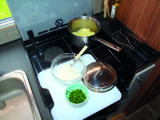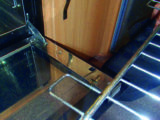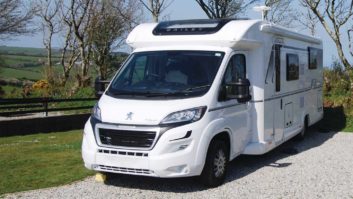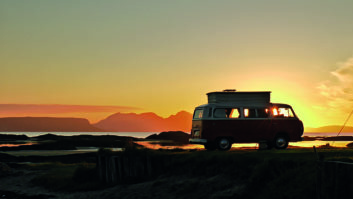The modern motorhome kitchen is quite something – a place where, with care, keen foodies can create all sorts of culinary delights, dishes that will more than match almost anything you can cook up at home.
This is largely thanks to the cooker options a well-specified vehicle now delivers: hob, oven and grill, and very often, a microwave as well.
Those who camp on hook-up can also potentially use air- or fat-fryers, electric grills, and many other devices.
Practical Motorhome is supported by its audience. When you purchase through links on our site, we may earn an affiliate commission. Learn more
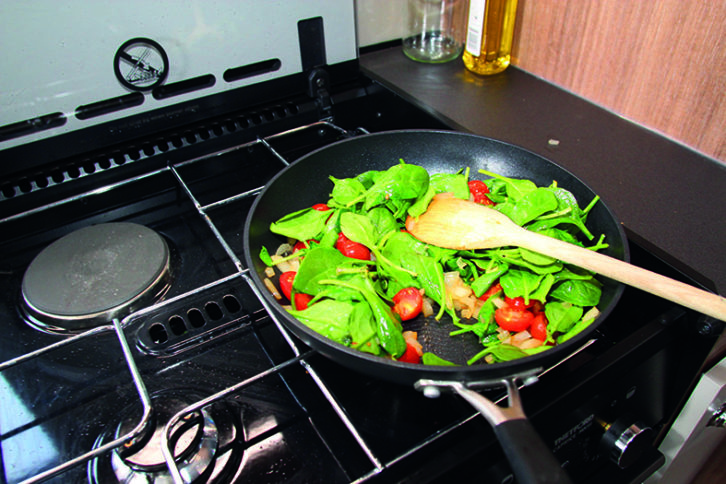
Of course, with space restrictions for prep (and in the oven), you might need to do a bit more planning, but there’s no reason why you can’t enjoy a banquet in your motorhome.
Ovens and grills
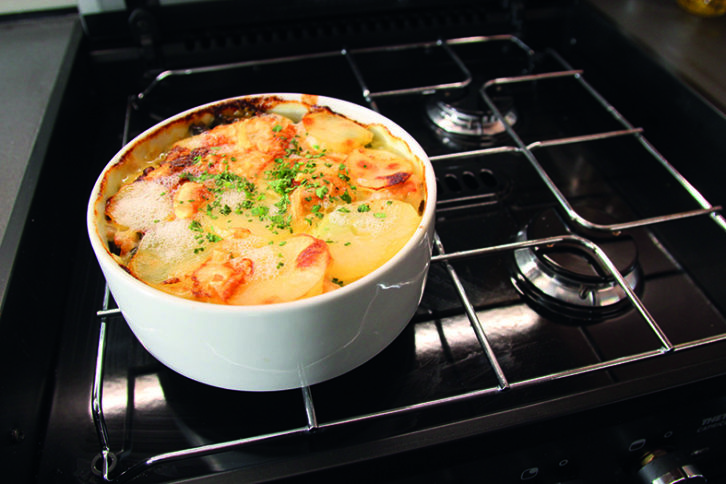
In today’s UK coachbuilt ‘vans, most cookers are made by Thetford or Dometic, and come in duplex or triplex designs. Duplex cookers feature an oven and grill, while the hob is a separate unit. Triplex cookers provide an all-in-one hob, oven and grill.
Thetford’s most popular range of duplex ovens and grills is specifically designed for leisure vehicles and holiday homes, and powered by LPG.
Their gas igniters are multipoint piezo systems, so these Spinflo duplex units don’t need electrical connection (we’ll look at piezo again shortly).
These cookers have one burner in the oven and another in the grill. The Thetford Triplex has a combined oven and grill in one place.
Dometic, meanwhile, offers a smaller range of devices, generally considered to be at the more premium end of the market. This is reflected in the price, and they have additional features, such as an oven light.
In some cookers, the igniter is a separate button; others have it built into each gas control knob. An electric spark is generated on each turn of the knob or press of the button, using a technology called piezo.

Piezo igniters, which don’t require an electrical power source, feature in all sorts of devices from cigarette lighters to camping cookers.
They rely on piezoelectricity, a charge that builds up in certain materials when they are subjected to a high-pressure impact.
In igniters, the system comprises a small, spring-loaded hammer, which, when the igniter button is pushed, strikes a quartz crystal or a piece of PZT (lead zirconate titanate) ceramic. This impact creates an instant high voltage, which in turn produces the spark to light the gas.
Size matters

Keen cooks should check the size of the oven in any motorhome they are thinking about buying.
The average domestic oven has around a 60-litre capacity, while the typical motorhome cooker, such as Thetford’s Caprice model, offers about 36 litres.
Although they are fairly compact units, you can even cook a roast dinner in them with a bit of forethought (for example, resting the meat under foil while you heat up the Yorkshire puddings you made earlier).
Hobs, burners and grills
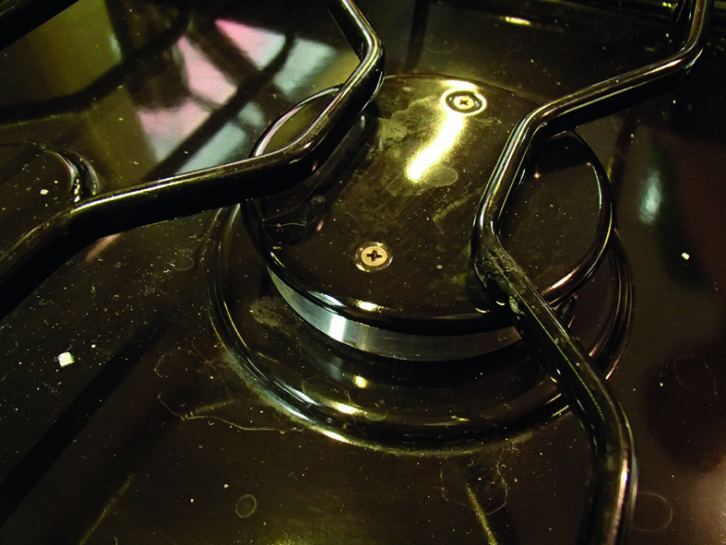
Motorhome hobs come in various shapes and sizes – some are part of a triplex unit and others are separate.
Using an independent hob has given manufacturers the chance to create some stunning kitchens. One such is Adria, which has produced very stylish kitchens in its Adora range over recent years. Eschewing the more traditional four-burner, square hob for a bespoke three-in-a-row unit, Adria has freed up workspace, which, when combined with carefully considered lighting, has created a kitchen that looks great.
Style aside, European customers generally don’t put as much focus on kitchenalia as we Brits (because they have the weather to cook outdoors more often, perhaps), so keen foodies should choose very carefully when selecting their next vehicle.
Most UK motorhomes have four-hob burners, which sounds great, at least in theory. In practice, though, it can be tricky to fit two or three pans in the space provided, never mind four.
That said, the burners are usually different sizes, and intensities, so you can use the ones you need.
Something that might alleviate ‘hob rage’ is Tefal’s Ingenio stainless-steel pan system (tefal.co.uk), featuring a variety of pan sizes and a clever detachable handle, making crowded hobs less of a problem and pan storage that bit easier to organise. A three-pan set, with lids and one handle, costs from £70. Having just one handle might sound odd, but it works.
I’m also a fan of dual-fuel hobs. Most often, these have three gas burners and one electric ring. On one trip, we had a gas leak in the locker and lost all of our gas within a weekend…. and we were on a two-week tour of France!
Of course, French gas cylinders are incompatible, and to add to our woes, this was a bank holiday, so we couldn’t find a pigtail adaptor. Instead, we had to buy a small camping cooker. But the single electric ring did mean we could have a brew before heading outside to cook breakfast. (You need to be on hook-up to use an electric hob.)
As for grills: they are temperamental things, in my experience. You put some bread under, and check it every 30 seconds. Nothing for ages… then total cremation of half of the piece of bread. I’ve found the secret with ovens and grills is to allow plenty of preheat time: patience is the key.
Will you want to cook?
If you peruse the stock that’s on show at any preowned ‘van sales forecourt, it’s notable how few hobs and ovens have actually had much serious use. In fact, many seem to look exactly as they did the day they left the factory.
Scout the forums on cooking subjects and a huge percentage of ‘van owners admit they don’t use their ovens at all – or only as additional storage! Great news for all of the keen touring cooks out there. Conversely, if you talk to motorcaravanners, some will tell you that their vehicle oven cooks as well as the one they have at home.
Convection cooking
Although Thetford’s K1520 has a fan oven as an option, most gas-powered ‘van cookers are convection ovens.
This can make them potentially less reliable, as the cooking might not be even, and they can take around 20% longer than your domestic cooker.
That said, you soon get to know your oven’s foibles and relative cooking times, and can then adapt your recipes to suit, perhaps by turning the dish halfway through, or selecting meals that are a bit less fickle.
Bear in mind that the top shelf of the oven will be the hottest and might be the only one suitable for the thorough cooking of items such as meat, while the lower shelves are good for things such as garlic bread, or for simply warming food through.
NOW YOU’RE COOKING
Time to get ready to pitch up and enjoy some great campsite cuisine! Here are our top tips, covering everything from using the gas supply safely, to packing and travelling with cooking gear, and cleaning and maintaining your cooker.
On the road

- Wrap oven trays to prevent them from rattling and scratching while you’re on the move, but don’t forget to unwrap them before you preheat the oven. Remember to tell your service engineer, too, or better still, take them out of the oven first.
- Remove grill pans and microwave dishes when travelling, to eliminate risks of scratches or dents.
- Consider taking frozen, precooked meals for your first night, for speed and convenience. They will thaw out over the duration of your journey.
On the pitch
Safety
- If you find there is a strong smell of gas in your motorhome, do not turn on the engine, or any electrical appliances or lights. Move everyone away from the vehicle, leaving the door, the windows and any roof lights open.
- Turn off the gas at the bottle and leave the locker open to allow the gas to disperse. Contact an engineer.
- Beware closing the glass hob cover over a lit flame – it could fracture in a matter of seconds.
- If you flood the gas jet, try to remove as much water as possible with a cloth. The gas pressure should force any remaining liquid out of the jet.
- All of the hob burners should burn consistently, cleanly and evenly at both high and low settings.
- Motorhome cooker hobs are often located in front of a kitchen window. This can be beneficial for airflow and removing odours, but even on mildly breezy days, any draught from the window can slow the cooking process, or even blow out the gas burner.
- You should have an air vent/drop-out vent underneath your cooker, where there’s often a pan locker. This space can be filled with pots and pans, but the vent should not be taped yup to stop draughts. LPG is heavier than air, so any leaking gas will sink to the floor and drop out of this open vent, keeping the vehicle occupants safe.
- The slim, pull-out metal strip under your cooker knobs is a heat deflector, designed to prevent the knobs getting too hot because of heat from the frill. Pull it out when the grill is being used, to minimise any danger of the plastic controls melting.
- If your control knobs will not push in, or pop back out, they are probably clogged with grease. You should have this problem fixed by a professional, because it’s possible that the unlit gas could continue flowing.
- “Cookers are not heaters!” says David Hayes of Out & About Services. If your ‘van heating system packs up, do not use your oven as a heater, with its door left open. This is dangerous, owing to the potential build-up of lethal carbon monoxide.
Best practice

- Read the instructions! Many ovens need a 20-minute warm-up at full heat before being turned down to the desired cooking temperature.
- In a new-to-you motorhome, note the cooking times, temperatures and which oven shelf you use. Keep those notes to hand, to help you with timing and perfecting your future meals.
- Have all of your food close by before opening the oven door, and minimise the time the door is left open. The oven loses heat quickly and takes longer than a domestic unit to reach target temperature again.
- On the same theme, don’t keep opening the oven door to check how the contents are doing.
- Ensure oven shelves are the correct way around and the right way up! The lugs should face towards the back, to prevent dishes from sitting above the burner, which could be blocked or extinguished if they bubble over. The gap also allows heat to circulate.
- Likewise, the triangular ‘kink’ in the outer bar of the shelf should face down, as this stops the shelf pulling all the way out when you’re trying to retrieve a dish from inside.
- The raised bar at the back of the oven shelf is designed to prevent dishes from being pushed too far back over the burner, or sliding off the back when the shelf is pulled out.
- The piezo igniter creates an arc between itself and the metal casing, which ignites the gas. If the igniter stops working, it might be a fuse, or the igniter itself could be broken.
- Tucked away at the back of the cooker, the igniter is not very easy to reach. Lighting with matches or a lighter is a good option.
- When boiling liquids, open the roof vent or window to increase ventilation and minimise condensation.
- Do not use abrasive cleaners on your hob – you can do permanent damage.
- After a boil-over or spill on the hob take care to clean it up as quickly as you safely can. You do not want liquid or fat getting into the sects, which can easily become blocked.
Gas and flames
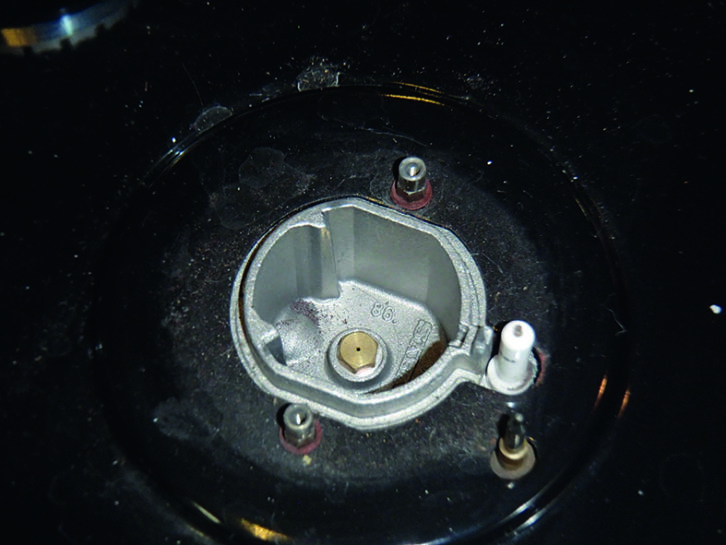
Safety
- Be aware that Caravan & Motorhome Club campsites don’t allow gas bottles of 15kg or larger to be stored outside your motorhome.
- Small flames can be caused by a hob cover that’s not fully opened. Some motorhome cookers have a cut-off switch built into the cover hinge, so the flame will automatically extinguish if the cover is lowered.
- It’s possible, if the cover isn’t fully opened up, for this safety switch to partially cut the gas flow.
- If one burner flame gets smaller when a second or third burner is lit, this could indicate a faulty regulator, or that you are running low on gas.
- Another cause of a low flame can be using butane in winter temperatures below 5°C. Butane doesn’t boil (go from liquid to gas) at below minus 2°C, but your motorhome cooker’s performance could be affected at slightly higher temperatures than that.
- Four-season motorcaravanners should consider swapping to propane, which boils at around minus 40°C.
- How you swap to propane depends on your current gas system and bottle size. You might need to purchase an adaptor, or a completely new hose and regulator. We would recommend consulting a professional.
- Butane and propane tend to burn quite clean (when burning properly), so jets and burners don’t clog up.
- A burner that is functioning correctly with LPG will burn with a clean, blue flame.
- Modern motorhome ovens and hobs feature automatic gas cut-off. When lit, the flame from the burner heats the thermocouple which, when hot, engages a valve to let the gas flow.
- If, however, the flame blows out, the thermocouple quickly cools down and disengages the gas valve. This should take less than a minute, and you will hear a noticeable ‘clunk’ as the flow of gas stops.
Service and maintenance
Safety
- Any work on your cooker’s gas supply systems should always be carried out by a Gas Safe-registered professional; learn more at gassaferegister.co.uk/find-an-engineer.
- Stripping down a cooker is complex and could be dangerous: it’s best left to your AWS-accredited technician.
- In an approved motorhome service, your technician will also test all of the automatic hob cut-offs.
Best practice


- Follow the manufacturer’s guidelines when it comes to cleaning your ‘van hob and oven, because the protective finish can be damaged by scouring pads or abrasive cleaning solutions.
- Avoid flooding the hob when you’re cleaning it – instead, use a damp cloth. Too much water, cleaning solution, or even water from a boiled-over pan, can flood the ‘pots’ that contain the jets, and prevent the burner from working.
- Worse still, any fat in the water can get into the jet or burner holes and block them completely, causing an uneven flame, or no gas flow at all.
- Hob burner units in motorhomes are often held in place with Phillips screws (the simple crosshead screws).
- Occasionally, you will encounter Pozidriv screws, which have additional grooves between the four main ones. Don’t try to remove a Phillips screw with a Pozidriv screwdriver, because there’s a good chance you’ll damage the screw head.
- Cast aluminium and stainless-steel burner components can corrode if left wet. Dry them off after cleaning.
- To carry out an oven check, first ignite the oven on full heat. If you push the knob in to ignite the burner, make sure that when you release the knob again, it comes back out fully.
- If you push the knob in and it doesn’t return, you are bypassing the safety function – so if the flame goes out, the gas will keep coming.
- Check there’s no food on the gas burner, and that the burner is lit all of the way across.
- The glowing part is the piezo igniter, and you will also be able to see the oven thermocouple.
- If the gas jet is burning cleanly, there will be no, or very little, sign of yellow showing in the flame.
- If you can see significant amounts of yellow flame, this means that the combustion process is incomplete, your oven might not be able to achieve the correct temperature, and the flame will create soot. Likewise, if your flame looks ‘floppy’ (you’ll know exactly what this is when you see it!), that’s also a sign of poor combustion. Time to call in the pros.
- The thermostat tube is a slim metal bar set into the side of the oven. To check that your oven’s thermostat is functioning as it should, you need to heat the oven on full power for five minutes or so. At full power, you’ll be able to see a large flame coming from the burner.
- Next, turn the temperature control down to a low setting. Now, if the thermostat is working correctly, the flame inside the oven will shrink, noticeably, but will not go out.
Thanks to Dave Hayes at Out & About Motorhome & Caravan Services, south Lincolnshire, for his assistance with this feature.
IF YOU LIKED THIS, READ THESE:
Best kit to pack for a motorhome toolkit on tour
Best motorhome for full-time living 2022
Spotlight on winter preparation
If you’ve enjoyed reading this article, why not get the latest news, reviews and features delivered direct to your door or inbox every month. Take advantage of our brilliant Practical Motorhome magazine SUBSCRIBERS’ OFFER and SIGN UP TO OUR NEWSLETTER for regular weekly updates on all things motorhome related.
Future Publishing Limited, the publisher of practicalmotorhome.com, provides the information in this article in good faith and makes no representation as to its completeness or accuracy. Individuals carrying out the instructions do so at their own risk and must exercise their independent judgement in determining the appropriateness of the advice to their circumstances. Individuals should take appropriate safety precautions and be aware of the risk of electrocution when dealing with electrical products. To the fullest extent permitted by law, neither Future nor its employees or agents shall have any liability in connection with the use of this information. You should check that any van warranty will not be affected before proceeding with DIY projects.
Follow the manufacturer's guidelines when cleaning your hob and oven, as protective finishes can be damaged by scouring pads or abrasive solutions
